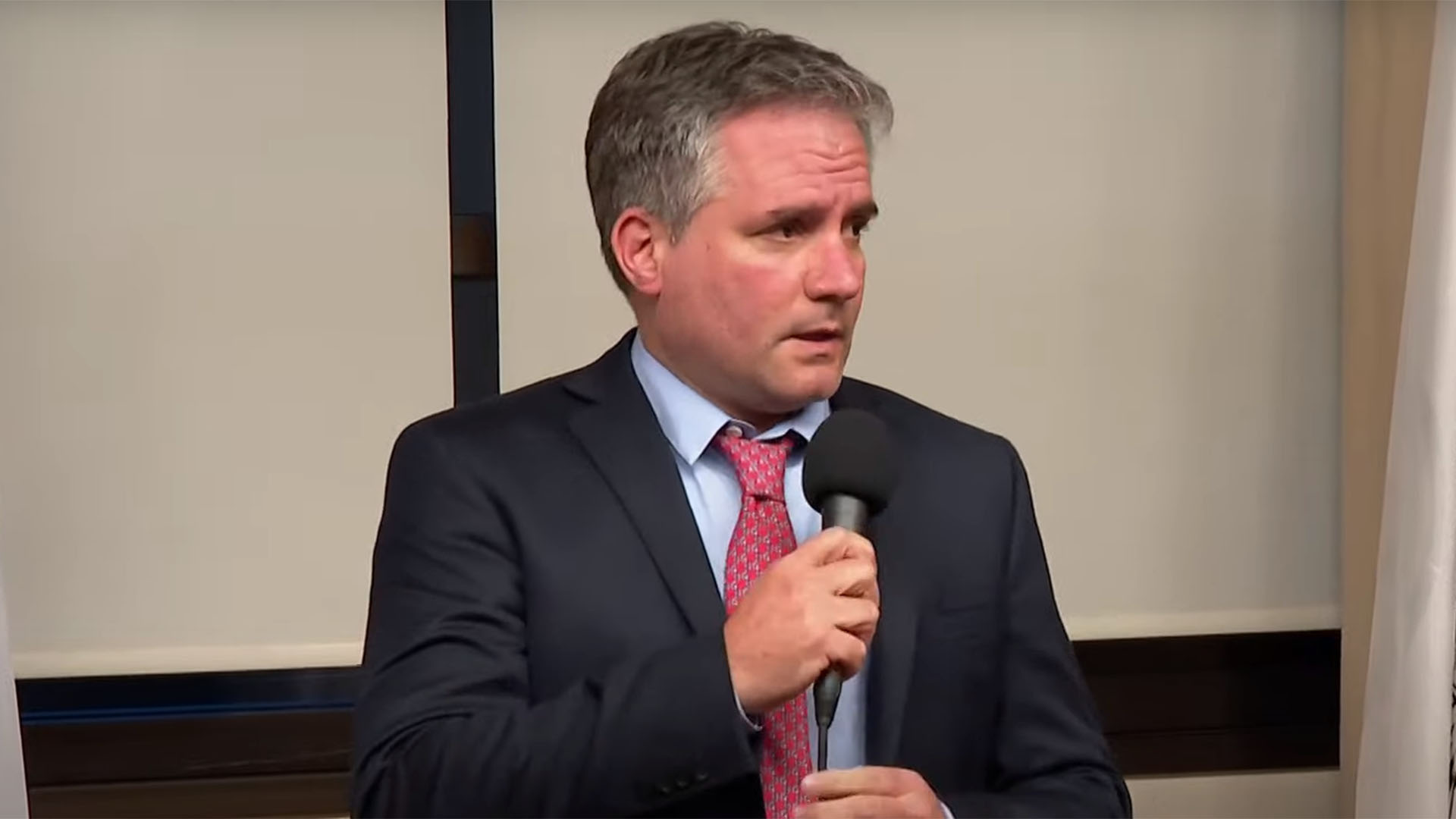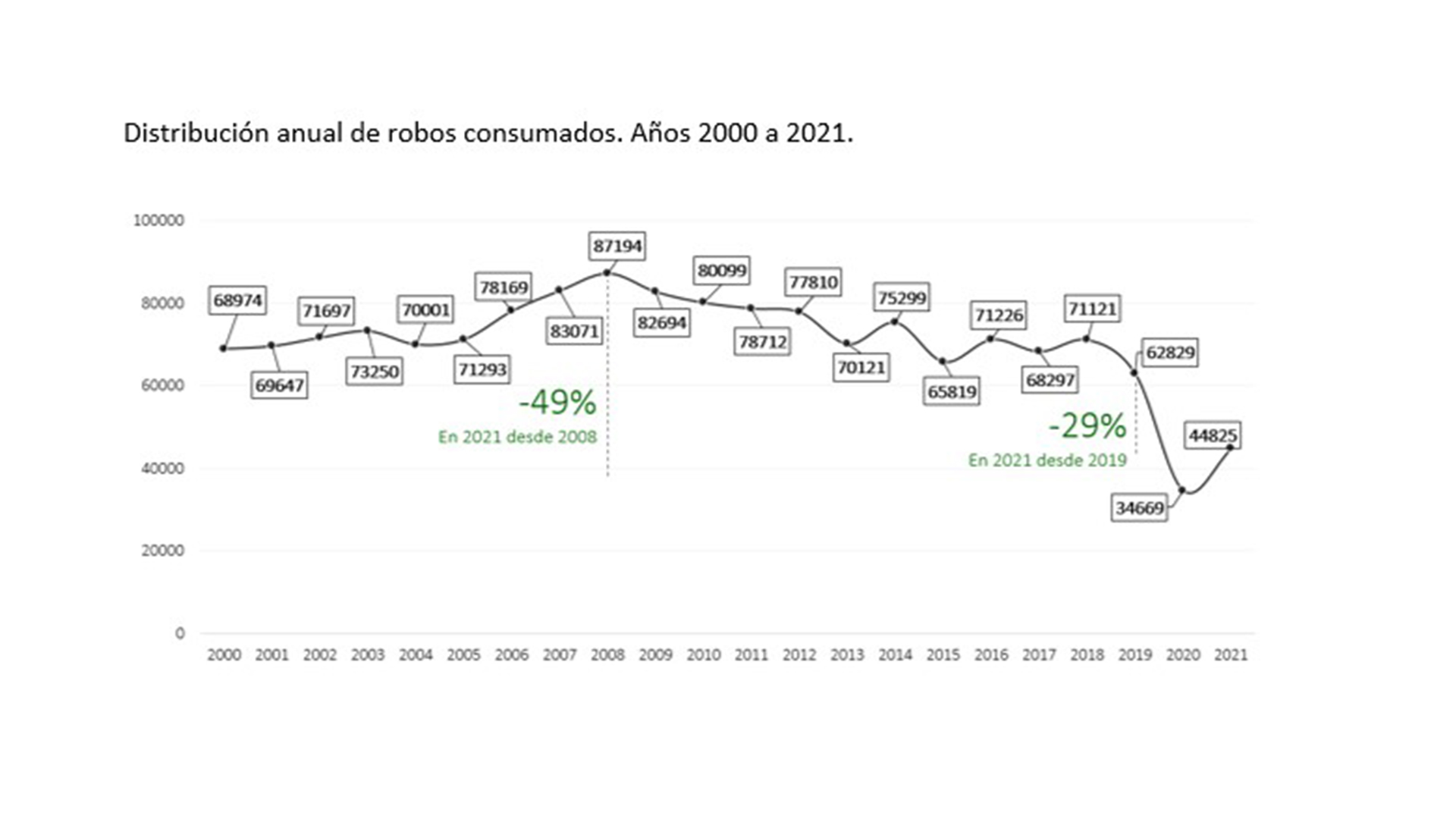
Palermo and Balvanera top the list of Buenos Aires neighborhoods where the most robberies were committed in 2021, a crime that fell by 29 percent compared to 2019, according to a map of the insecurity of the Autonomous City of Buenos Aires presented by the Chief of Government Horacio Rodríguez Larreta and that Infobae advanced this Monday.
Of the total number of robberies recorded in the City, in Palermo the figure provided by the report was 10.3% and in Balvanera it was 7.6. On the other hand, in the neighborhoods where there were fewer attacks were Agronomía and Puerto Madero, where the percentage was below one percent.
In relation to the thefts, Palermo and Balvanera also topped the list. Between the two neighborhoods, 19.6% of the incidents were committed: 11.5% in Palermo and 8.1% in Balvanera, followed by 5.5% in Recoleta.
On the other hand, an encouraging figure emerged in the report: thefts committed by motorcycle jets fell by 51 percent compared to 2019. Although it was not the only item in decline in the two years of the pandemic: the portfolio led by Marcelo D'Alessandro, who commands the City Police with 19,000 troops, reported a 29 percent decrease in thefts overall -44,825 cases in 2021, 62,829 in 2019-, a 26 percent drop in thefts, and a 49 percent decrease in thefts percent of the car theft.

Armed robberies, occasionally, fell by 38 percent between 2019 and 2021.
Homicides are kept to a similar statistic. In 2021, there were 103 cases, in 2020 they were 127, and in 2019, 102. Of all violent crimes in CABA, 40 percent are concentrated in Bajo Flores, with Villa 1-1-14, the Illia and Rivadavia neighbourhoods, Villa 21-24/Zavaleta and Villas 31 and 31 bis. Of those 40 percent of cases, 70 percent correspond to events related to drug trafficking. In the 31 and 31 Bis neighborhood, whose security is managed by the City, homicides dropped 64 percent in two years.
However, in Bajo Flores, homicides rose from 5 in 2019 to 14 in 2021, representing a 180 percent increase with the strengthening of historic gangs in the area now marked by the rise of members of the band “Dumbo” Martínez Maylli and the historic kingpin “Marcos” Estrada González. Also, Sabina Frederic's tenure as Minister of National Security included a progressive withdrawal from the Gendarmerie in Lower Flores.
In a few weeks, according to officials from the portfolio, the Buenos Aires Ministry of Security will have 75 percent of the City under video surveillance: there are already 11,000 cameras linked to the Urban Monitoring Center, 50 percent of cases of robberies and theft in public transport transshipment sectors are filmed. The Digital Ring allows you to identify the vehicles that use the 74 entrances and exits of the City, along General Paz Avenue and the bridges over the stream. It includes two monitoring centers and 740 patent readers.
“In the City, we always govern based on data and evidence. Because that is the only way to know where we stand, what we are doing well and what we need to improve. With the Crime Map, year after year we have serious and reliable statistics that allow us to better design our fight against crime and to carry out our Comprehensive Public Security Plan more efficiently. Today, the data shows a resounding achievement: almost all crimes continue to fall, to the point that the City today has the lowest crime rates in the last 27 years,” said Horacio Rodríguez Larreta, head of government.

Felipe Miguel, Buenos Aires Chief of Staff, agrees: “When you work with planning, analyzing statistics, telling the truth, recognizing the starting point and, above all, with effort and perseverance, the results are seen. All merit of the Police, of having an Integral System and continuing to add tools such as the Crime Map, video surveillance or the Digital Ring”.
D'Alessandro contextualizes the situation: in 2020, “there was a very large release of detainees at a time when everything was standing still”, referring to compulsory isolation and prisoners released by the pandemic in multiple judicial decisions, as well as the ongoing confrontation with the Federal Prison Service over problems of quota to accommodate detainees: “We closed the prison doors,” he said. The number of overpopulation reached 250 percent in the municipalities of CABA. “Today, policemen who should be on the street take care of prisoners.”
On the other hand, 23 percent of those arrested for robbery and theft were arrested at least twice between 2019 and 2021. Twelve per cent of the defendants in the same areas are minors between 13 and 17 years of age. Thus, D'Alessandro points to another, more difficult debate: “The Juvenile Criminal Law fails. It cannot be that there are no consequences.”
KEEP READING
Últimas Noticias
Debanhi Escobar: they secured the motel where she was found lifeless in a cistern
Members of the Specialized Prosecutor's Office in Nuevo León secured the Nueva Castilla Motel as part of the investigations into the case

The oldest person in the world died at the age of 119
Kane Tanaka lived in Japan. She was born six months earlier than George Orwell, the same year that the Wright brothers first flew, and Marie Curie became the first woman to win a Nobel Prize

Macabre find in CDMX: they left a body bagged and tied in a taxi
The body was left in the back seats of the car. It was covered with black bags and tied with industrial tape
The eagles of America will face Manchester City in a duel of legends. Here are the details
The top Mexican football champion will play a match with Pep Guardiola's squad in the Lone Star Cup

Why is it good to bring dogs out to know the world when they are puppies
A so-called protection against the spread of diseases threatens the integral development of dogs




